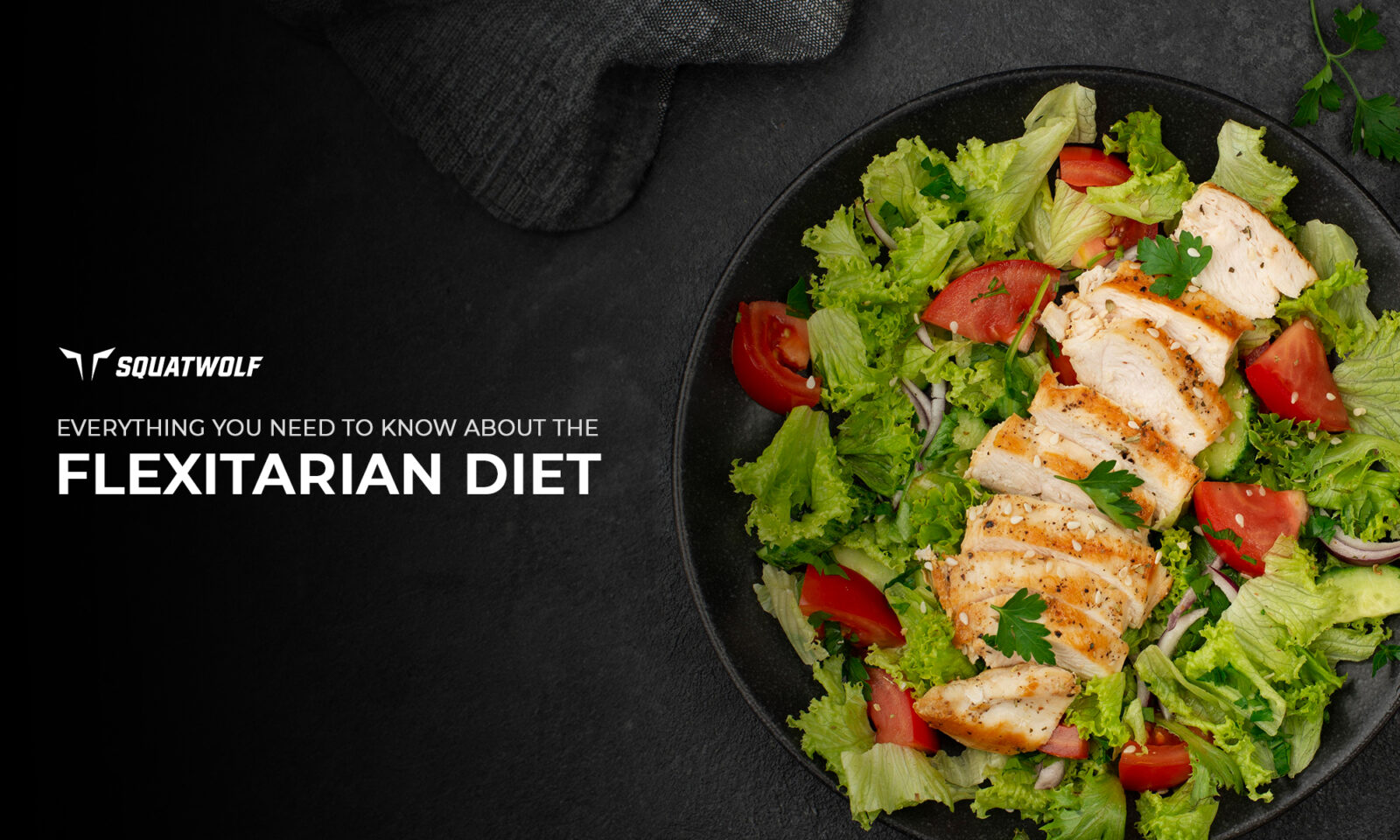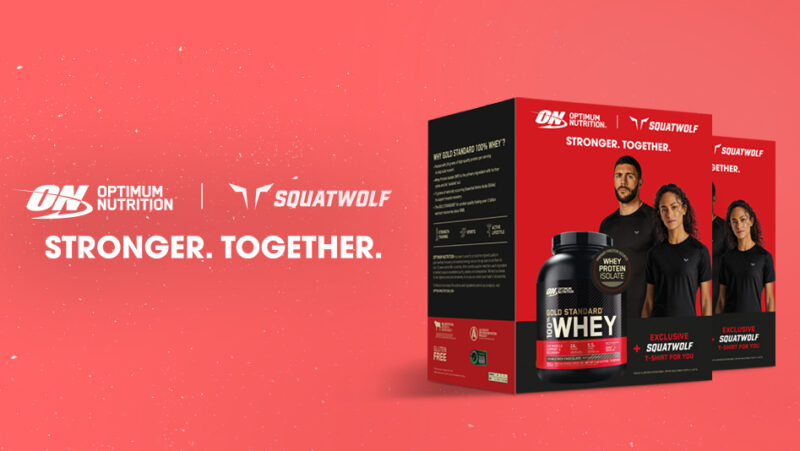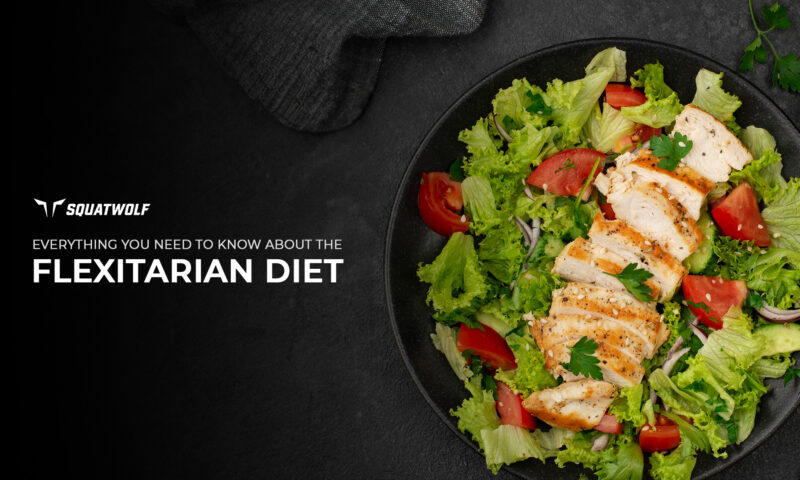Created by Dawn Jackson Blatner, the Flexitarian diet strikes the balance between flexibility and moderation. This diet is a way of life, focusing on plant-based sources of proteins, vegetables, fruits, nuts, legumes, beans and other kinds of whole foods as well as lean sources of animal-protein such as fish, chicken, salmon and more. While this diet encourages red meat consumption in calculated quantities, it leaves some window for you to enjoy dishes you like!
What Is the Flexitarian Diet | Foods Allowed | Meat Guidelines | Foods Restricted | Benefits | Key Takeaways | FAQs
What Is the Flexitarian Diet?

A combination of “flexible” and “vegetarian”, the “Flexitarian” diet was developed by the diet expert, Dawn Jackson Blatner. The coined term reflects what this diet is about – being flexible with your eating habits. This is because while this diet focuses mainly on vegetables, it also allows you to have meat and dairy products.
What makes this diet such a hit is that it promotes moderation. This diet is neither entirely plant-based like the vegan diet nor does it cut out meat-based products like the vegetarians do. Rather, it’s somewhere in-between – encouraging you to eat more vegetables while also having animal-based products. In fact, some people may even call it the ‘Lowkey Vegetarian Diet’.
Why Is the Flexitarian Diet So Popular?
According to dietitians and nutritionists, the flexitarian diet is popular because it:
- Does not impose any caloric restrictions.
- Encourages consumption of non-meat proteins such as soybeans, tofu, eggs, quinoa, etc.
- Keeps meat in your diet still, which is enough to satisfy your cravings.
- Focuses on increasing plant-based eating options such as fruits, nuts, veggies, whole grains, legumes, etc.
- Lowers intake of processed foods such as frozen foods.
- Reduces sugar and sodium consumption.
For these reasons, the flexitarian diet is quite popular among people trying to cut down meat and increase their plant-based food intake.
On the flip side, if you’re trying to increase your meat consumption, you might want to try the Vertical Diet.
What Are the Foods Allowed on A Flexitarian Diet?

As mentioned earlier, the focus of this diet is on increasing protein consumption through plant-based foods.
Here’s what you should eat when on this diet:
Fruits and Vegetables
- Fruits: Apples, bananas, berries, oranges, pears, peaches, melons, etc.
- Veggies: Leafy greens such as spinach and kale, broccoli, cauliflower, carrots, bell peppers, tomatoes, etc.
- Nutrients: Loaded with vitamins such as A, C, and K, minerals such as potassium and magnesium, fiber, and antioxidants.
Whole Grains
- Quinoa, brown rice, whole wheat, oats, barley, buckwheat, farro, and whole grain breads and pastas.
- Nutrients: Carry complex carbohydrates, fiber, B vitamins, iron, magnesium, and selenium.
Plant-Based Proteins
- Legumes: Beans such as black, pinto, kidney, lentils, chickpeas, peas.
- Soy Products: Tofu, tempeh, edamame, soy milk.
- Nutrients: Rich in protein, fiber, vitamins such as folate, and minerals such as like iron and zinc.
Nuts and Seeds
- Almonds, walnuts, cashews, chia seeds, flaxseeds, pumpkin seeds, sunflower seeds.
- Nutrients: Carry protein, fiber, vitamins and minerals, and good fats such as omega-6 and omega-3.
Eggs and Dairy
- Eggs: Whole eggs or egg whites.
- Dairy: Milk, cheese, yogurt (you should go for skimmed, fat-free or low-fat ones).
- Nutrients: High in protein, calcium, vitamin D, B vitamins, and essential fatty acids.
Meat and Fish
- Lean meats: Chicken, turkey, lean cuts of beef.
- Fish: Salmon, trout, tuna, mackerel, and other fatty fish.
- Seafood: Shrimp, crab, mussels.
- Nutrients: Contain protein, omega-3 fatty acids (in fatty fish), B vitamins, iron, and zinc.
Good Fats
- Olive oil, avocados, nut butters, fatty fish (for omega-3 fatty acids).
- Nutrients: Monounsaturated and polyunsaturated fats, including omega-3 fatty acids.
Herbs and Spices
- Herbs like parsley, garlic, basil, thyme, oregano and seasonings such as turmeric, ginger, garlic for spicing up your meals.
- Nutrients: Several phytochemicals, antioxidants, vitamins, and minerals.
Beverages
- Water: Essential for hydration for a healthy oxygen circulation around your body.
- Herbal Teas and Coffee: Carry antioxidants and anti-inflammatory properties (you should use these in moderation).
Struggling to regulate your blood pressure levels? Consider switching to a healthier lifestyle that focuses on low sodium foods with the DASH Diet.
How Much Meat Is Allowed on A Flexitarian Diet?
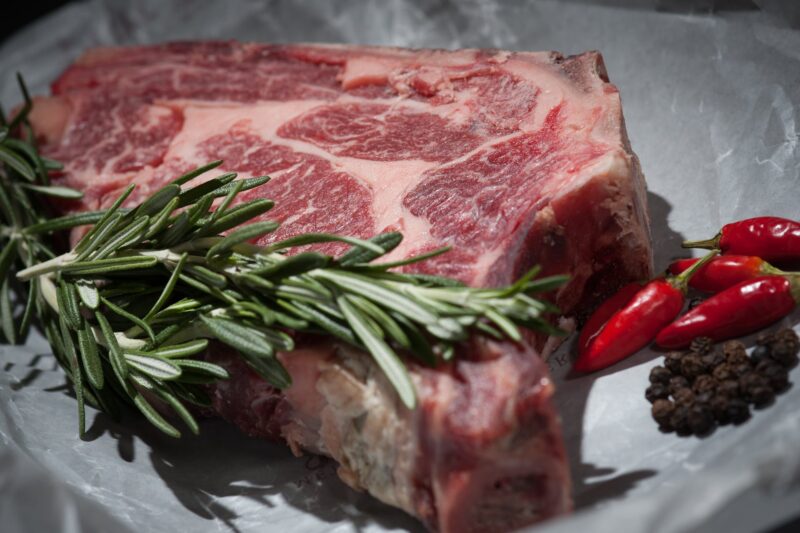
While the Flexitarian diet doesn’t restrict meat consumption, it limits it. This means that you’re likely to consume less than you’re used to – but you can always enjoy a burger here and there.
To gradually reduce your meat consumption, you’re supposed to go through the 3 stages of the Flexitarian diet:
Stage #1
As a newbie to the Flexitarian diet, you should bring your meat intake down to 800 grams per week. You can consume this throughout the week. However, make sure you’re eating this for 5 days only – leave the remaining 2 days for veg-only diet.
Stage #2
The more you get used to veggies, fruits and grains in your diet, the more you should start cutting back on meat intake. Your meat consumption shouldn’t exceed 500-550 grams. By the time you reach this stage, you should be eating a plant-focused diet for 3-4 days of the week. So, you can spread out your meat consumption through the remaining days of the week.
Stage #3
Around this time, your meat consumption should be not more than 255 grams. Go for a plant-based diet for 5 days on stage 3. This means you can have meat on the remaining 2 days.
Try these 4 high protein vegetarian recipes to increase your protein intake through plant-based options!
What Foods Are Not Allowed on A Flexitarian Diet?
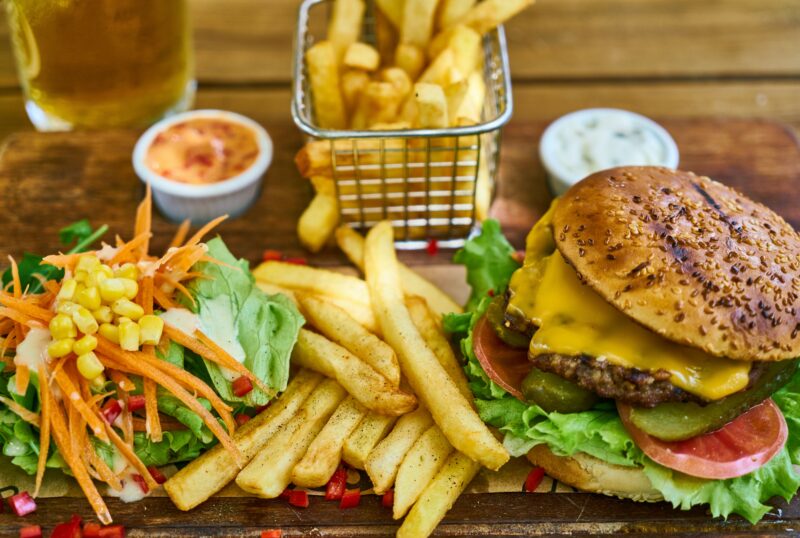
Even though the Flexitarian diet is all about being moderate and staying sustainable with your eating habits, it does restrict certain edibles that aren’t good for you.
These include:
Processed Meats
- Such as sausages, bacon, and deli meats, which are high in sodium and preservatives.
- Why: Typically, high in sodium and preservatives like nitrates linked with greater risks of heart disease and various types of cancers.
Refined Carbs
- White bread, pastries, and other processed grains that don’t carry essential nutrients such as fibers.
- Why: Since these foods are high in glucose, they can cause blood sugar surges, leading to weight gain, diabetes and higher risks of heart attacks.
Highly Processed Foods
- Premade meals, chips, and snacks, carrying bad fats, and are loaded in sugars, and preservatives.
- Why: Not only are they loaded with fats and sugar, they also have high sodium levels that trigger heart diseases, cardiovascular problems, obesity, etc.
Fast Food
- Deep fried chicken, loaded fries, pizza, burgers, etc.
- Why: High in fats, sodium, sugars and loaded with unnecessary calories, fast foods buy you a quicker ticket to heart diseases, obesity, and other health problems.
Excessive Sugar
- Sodas, jellies or candy, cookies, and sweets.
- Why: Loaded with sugar, these foods only push you into dental problems, obesity and type 2 diabetes, and dental problems.
High-Fat Dairy Products
- Full-fat milk, butter, cheese and cream.
- Why: Commonly loaded with saturated fats, leading to high cholesterol levels, greater risks of cardiovascular problems, etc.
If you’re looking for a quick-fix to your weight gain problems, you might want to consider a no-sugar diet. However, make sure your diet intake is nutritious and protein-rich!
What Are the Benefits of Flexitarian Diet?
Several studies discuss the benefits of the Flexitarian diet such as:
Lower Risks of Heart Diseases
With a diet loaded with veggies, fruits, legumes and whole grains, you’re at a lesser risk of heart problems. This is because these foods regulate your cholesterol and blood pressure levels. In addition, according to the research by American Heart Association, people who focus on plant-based diets are 52% less likely to get heart diseases. And if you consistently add proteins such as fish, which is rich in omega-3, you’re going to ensure cardiovascular health.
Weight Management
If your goal is weight loss, then you definitely need to consider the Flexitarian diet. This is because even though it does not specify any caloric restrictions, it does encourage consuming whole foods that are high in fiber, proteins, minerals and vitamins that keep you full. This diet also encourages low-sugar and low-sodium meals, helping boost your weight loss.
Reduced Risk of Type 2 Diabetes
According to a study, people who are more plant-focused with their dietary habits are 34% less likely to get diabetes type 2 than those who’re not. This is because plant-focused diets such as the Flexitarian diet are rich in fiber, which helps in managing their blood sugar levels. In addition, since this diet discourages sugary and processed foods, your overall sugar consumption is also minimal. This naturally reduces your risk of diabetes.
Lower Risk of Cancer
As per research, diets that are plant-based reduce cancer risks. This is because they provide you with the essential minerals, vitamins and antioxidants that prevent cancer development. In addition, since this diet discourages meat and processed foods, it reduces risks of cancer.
Check out these tips about what to eat if you’re struggling to lose weight with PCOS.
Key Takeaways
The Flexitarian diet is your way to enjoying a nutritious and nourishing lifestyle – all the while having some meaty meals every now and then. Since this diet isn’t as restrictive, it allows you to enjoy delicious meals in a sustainable manner.
For your long-term wellness and fitness, incorporate some light workouts such as Hyrox exercises into your routine.
FAQs
Since the Flexitarian diet is a heavily plant-focused diet, flexitarians usually eat whole foods, whole grains, seeds, nuts, vegetables, fruits, and legumes. They also have low-fat dairy options in their diet. Mainly tofu, tempeh, soybeans and other plant-based proteins are staples in their diet. In addition, they also have animal-based proteins in moderation.
Flexitarians eat meat according to the stage of the diet they’re on. So if you’ve just started the diet and are on stage 1, then you should eat about 800 grams of meat 5 days a week. As you progress to stage 2, you need to reduce your meat intake to 500-550 grams for 3-4 days a week. On the last stage of the diet, which is stage 3, you should have about 255 grams of meat 2 times a week. If you’re on the Flexitarian diet for weight loss, then make sure you pair this diet with any kind of workout you like. And while you workout, make sure you’re wearing the right workout clothes so you’re pumped up during your sweat sessions.
Even though this diet focuses on ‘flexibility’ and ‘moderation’, there are certain disadvantages because of a lack of meat-based protein sources. People who follow this diet rigidly may experience deficiencies of vitamin B12, iron, calcium, zine and omega-3 fatty acids. This could lead to several health problems so it is best to be lenient when you’re on this diet.

